By Jnanendra Das
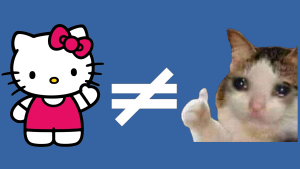 This year marks the 50th anniversary of the creation of one of the world’s most recognisable characters, Hello Kitty. Created in 1974 by a 24-year-old Japanese illustrator Yuko Shimizu, who put pen to paper to draw the iconic London suburb girl. Yes, you read that right, Hello Kitty is not a cat, but rather a girl and her real name is Kitty White. Now she is everywhere as a character and a product, you just name it. What began as a simple print on a small vinyl coin purse has now evolved into a global phenomenon, appearing on everything from everyday products to luxury items—even contact lenses. She is a celebrity among celebrities.
This year marks the 50th anniversary of the creation of one of the world’s most recognisable characters, Hello Kitty. Created in 1974 by a 24-year-old Japanese illustrator Yuko Shimizu, who put pen to paper to draw the iconic London suburb girl. Yes, you read that right, Hello Kitty is not a cat, but rather a girl and her real name is Kitty White. Now she is everywhere as a character and a product, you just name it. What began as a simple print on a small vinyl coin purse has now evolved into a global phenomenon, appearing on everything from everyday products to luxury items—even contact lenses. She is a celebrity among celebrities.
With two eyes, six whiskers, a cute yellow nose, a red bow and no mouth, she is one of the most recognisable faces in the world. She was born on November 1 in London to George White (father) and Mary White (mother). She also has a twin sister Mimmy, who is her best friend. She enjoys baking cookies and making new friends. Everything in her world is measured in apples. She weighs three apples and is five apples tall. Her world is large. She has her own pet, Charmmy Kitty, a boyfriend named Dear Daniel, and hundreds of friends. (Source: “Hello Kitty”, sanrio.co.jp)
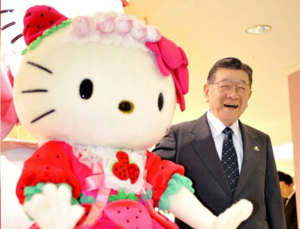 The idea of Kitty White not being a “cat” has left her stans in splits. Several news articles feature headlines with surprising reactions and revelations. On the subreddit r/HelloKitty, Redditors are venting about the creator’s statement that Hello Kitty is not a cat. One user expressed frustration over the revelation, claiming that the idea of Hello Kitty being a small girl allegedly came 40 years after her creation and called it a “publicity stunt.” In reality, Hello Kitty can be considered an anthropomorphised version of a cat with human-like characteristics.
The idea of Kitty White not being a “cat” has left her stans in splits. Several news articles feature headlines with surprising reactions and revelations. On the subreddit r/HelloKitty, Redditors are venting about the creator’s statement that Hello Kitty is not a cat. One user expressed frustration over the revelation, claiming that the idea of Hello Kitty being a small girl allegedly came 40 years after her creation and called it a “publicity stunt.” In reality, Hello Kitty can be considered an anthropomorphised version of a cat with human-like characteristics.
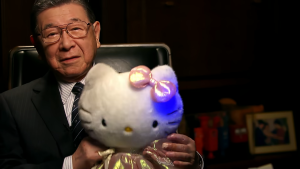 Sanrio, (the company that owns the royalty) started in 1960 as Yamanashi Silk Center in Tokyo. Shintaro Tsuji was a dissatisfied bureaucrat in Japan who wanted to quit to start a gift business. His aim was a “Small gift, big smile” and with this, the idea behind Sanrio was conceived. He began by selling rubber sandals with a flower or strawberry painted on them. Tsuji noted the profits gained by adding a cute design to the shoes and hired cartoonists to design cute characters for his merchandise. Hello Kitty designed by Yuko Shimizu, was added to the lineup of early Sanrio characters in 1974. The first Hello Kitty product was launched in 1975 called the “petite purse”. A small coin purse with “Hello!” written on top with the white kitty in the body. That’s how Hello Kitty came to be named. Sanrio has created over 400 characters in the last 50 years of business but Hello Kitty is their most popular.
Sanrio, (the company that owns the royalty) started in 1960 as Yamanashi Silk Center in Tokyo. Shintaro Tsuji was a dissatisfied bureaucrat in Japan who wanted to quit to start a gift business. His aim was a “Small gift, big smile” and with this, the idea behind Sanrio was conceived. He began by selling rubber sandals with a flower or strawberry painted on them. Tsuji noted the profits gained by adding a cute design to the shoes and hired cartoonists to design cute characters for his merchandise. Hello Kitty designed by Yuko Shimizu, was added to the lineup of early Sanrio characters in 1974. The first Hello Kitty product was launched in 1975 called the “petite purse”. A small coin purse with “Hello!” written on top with the white kitty in the body. That’s how Hello Kitty came to be named. Sanrio has created over 400 characters in the last 50 years of business but Hello Kitty is their most popular.
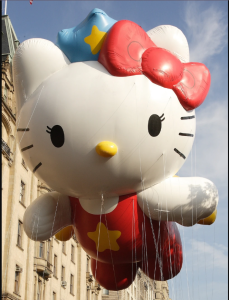 Hello Kitty merchandise is quite popular, and in addition to Sanrio, several licensed and unlicensed manufacturers produce Hello Kitty products. Big brands like Forever 21, Crocs, Starbucks, McDonald’s, Adidas, and many others have their own Hello Kitty-inspired lineups. Merchandise includes steering wheel covers, pet caves for cats, dental braces, and even themed tombstones and funerals for the afterlife. Starbucks has recently launched a merchandise and apple-based beverage line exclusively for Hello Kitty’s 50th anniversary.
Hello Kitty merchandise is quite popular, and in addition to Sanrio, several licensed and unlicensed manufacturers produce Hello Kitty products. Big brands like Forever 21, Crocs, Starbucks, McDonald’s, Adidas, and many others have their own Hello Kitty-inspired lineups. Merchandise includes steering wheel covers, pet caves for cats, dental braces, and even themed tombstones and funerals for the afterlife. Starbucks has recently launched a merchandise and apple-based beverage line exclusively for Hello Kitty’s 50th anniversary.
In the Netflix Docuseries called “The Toys That Made Us” Hello Kitty, Shintaro Tsuji, founder of Sanrio explains the story behind Hello Kitty, “There are three messages in Hello Kitty. First, you should be loved and you need to be nice to others to be loved. And the ribbon represents “human connections”, we should get along with one another. Also, having no mouth means, we need to express ourselves with our actions not only by words. Those are the meanings”.
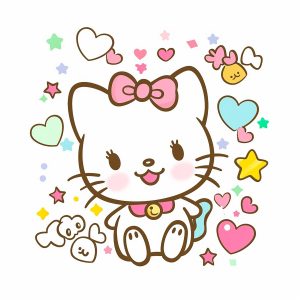 Originally, Hello Kitty was only marketed towards pre-teenage girls, but beginning in the 1990s, the brand found commercial success among teenage and adult consumers. Hello Kitty’s popularity also grew with the emergence of kawaii (cute) culture and the brand capitalised on that. With continued growth in the international market, in 1983 UNICEF appointed Hello Kitty as their children’s ambassador and the Japanese government in 2008 appointed Hello Kitty as “Visit Japan Campaign: China and Hong Kong Tourism Goodwill Ambassador” by the Ministry of Land, Infrastructure, Transport and Tourism.
Originally, Hello Kitty was only marketed towards pre-teenage girls, but beginning in the 1990s, the brand found commercial success among teenage and adult consumers. Hello Kitty’s popularity also grew with the emergence of kawaii (cute) culture and the brand capitalised on that. With continued growth in the international market, in 1983 UNICEF appointed Hello Kitty as their children’s ambassador and the Japanese government in 2008 appointed Hello Kitty as “Visit Japan Campaign: China and Hong Kong Tourism Goodwill Ambassador” by the Ministry of Land, Infrastructure, Transport and Tourism.
(Source: About Sanrio, Company History)
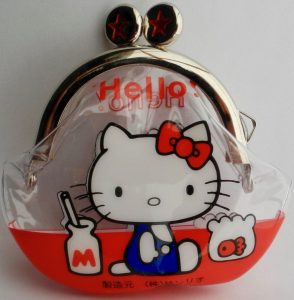 Hello Kitty’s galactic rise even took her to space! On her 40th year of launch in 2014, Sanrio launched Hello Kitty as a passenger on the small nanosatellite Hodoyoshi 3. In June of that year, she became a “catstronaut”, on that satellite, clutching a toy while stunning views of Earth filled a small window she was sitting by, in the background. A digital display sits above the window to show messages from Earth.
Hello Kitty’s galactic rise even took her to space! On her 40th year of launch in 2014, Sanrio launched Hello Kitty as a passenger on the small nanosatellite Hodoyoshi 3. In June of that year, she became a “catstronaut”, on that satellite, clutching a toy while stunning views of Earth filled a small window she was sitting by, in the background. A digital display sits above the window to show messages from Earth.



